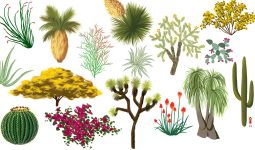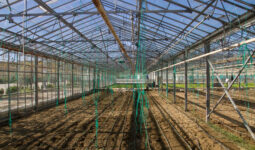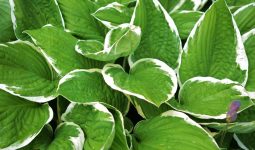Have you ever spotted those creepy-looking insects with pincers at the end of their bodies lurking in your garden?
These are earwigs, and while they might look scary, they’re actually easy to manage.
You can get rid of earwigs by simply clearing ground mulch and allowing the soil to dry out temporarily, as these pests thrive in moist environments.
Earwigs, sometimes called pincher bugs, can damage your plants by feeding on leaves and flowers.
Unlike other garden pests like aphids or slugs, earwigs are most active at night, hiding in dark, damp places during the day.
Their distinctive forceps might look threatening, but they’re mostly harmless to humans.
If you’re finding these household pests in your garden beds or potted plants, don’t worry! There are several natural methods to control earwigs without harsh chemicals.
From simple soapy water sprays to creating DIY traps, you’ll discover effective solutions that keep your garden thriving while sending earwigs packing.
Understanding Garden Earwigs
Earwigs, also known as pincher bugs, are common garden insects that often get a bad reputation.
These nocturnal insects belong to the insect order Dermaptera, with the European earwig (Forficula auricularia) being the most common species in North America.
You can easily identify earwigs by their most distinctive feature – the curved pincers (cerci) at the end of their bodies.
Males have more curved pincers, while females have straighter ones.
These pincers aren’t dangerous to humans but help earwigs defend themselves from predators.
Earwigs are omnivores with diverse eating habits. They consume:
- Plant material (including flower petals)
- Decaying organic matter
- Other insects and their eggs
- Algae and fungi
Most earwig activity happens at night since they’re nocturnal insects. During the day, they hide in dark, moist places like under mulch, rocks, or garden debris.
The life cycle of earwigs includes eggs, nymphs, and adults. Female earwigs lay 20-50 eggs in soil during winter or spring.
Unlike many insects, mother earwigs actually care for their eggs and young nymphs.
Earwig damage in gardens typically appears as irregular holes in leaves, petals, and soft fruits.
You might notice earwig damage on seedlings and flowering plants, especially during humid weather.
Despite their reputation, earwigs aren’t all bad for your garden. They act as natural predators of insect larvae and other pests like aphids.
It’s only when an earwig infestation occurs that they can cause significant plant damage.
Natural Prevention Methods
Preventing earwigs naturally starts with controlling moisture in your garden. These pincer-tailed insects love damp areas, so aim to water plants early in the day so soil dries before nightfall.
Reduce organic matter that attracts earwigs by keeping your garden tidy. Remove garden debris and fallen leaves regularly to eliminate their hiding spots.
Be strategic with mulch placement. While mulch helps your plants, it creates perfect earwig habitat. Keep mulch at least 6 inches away from your home’s foundation and use cedar mulch which naturally repels many insects.
Invite natural earwig predators to your garden. Birds, frogs, and toads eat earwigs and help control their population naturally. Creating a small pond can attract frogs that will happily feast on earwigs.
Encourage beneficial insects like the tachinid fly which parasitizes earwigs. Plant flowers like sweet alyssum and dill to attract these helpful flies to your garden.
Manage your compost piles properly. While composting is excellent for gardens, improperly managed piles become earwig breeding grounds. Turn compost regularly and keep it away from valuable plants.
Use gravel barriers around prized plants. Ornamental stones or gravel create uncomfortable terrain for earwigs to cross, protecting your favorite garden specimens.
Install weather stripping on doors and windows to block entry points. This simple step prevents earwigs from entering your home while you work on garden management.
Organic Control Solutions
Keeping earwigs away from your garden doesn’t require harsh chemicals. There are several natural methods that work effectively while keeping your plants safe.
Diatomaceous Earth is a powerful organic solution for earwig control. This fine powder damages the insects’ exoskeletons, causing them to dehydrate. Simply sprinkle it around plants and in areas where earwigs gather.
You can make a simple soap spray by mixing a tablespoon of organic liquid dish soap with a quart of water. This homemade solution works well when sprayed directly on earwigs.
Boric acid is another effective option. Create a mixture by combining:
- 2 tablespoons boric acid
- 1 tablespoon sugar
- 1 cup warm water
Place this mixture in shallow dishes around your garden to attract and eliminate earwigs.
Essential oils offer a pleasant-smelling deterrent. Oils like eucalyptus, cedar, and peppermint naturally repel these pests. Mix 10-15 drops with water in a spray bottle and apply to garden areas where earwigs frequent.
Neem oil works as a natural insecticide that helps control earwig populations. Apply it according to package directions for best results.
Creating a rubbing alcohol spray (70% solution diluted with equal parts water) can kill earwigs on contact. Use this carefully around plants as it may damage some sensitive varieties.
For ongoing protection, consider introducing natural predators like frogs to your garden. Creating a small pond can attract these helpful amphibians that will naturally control earwig populations.
Targeted Treatment Methods
When earwigs become a problem in your garden, several targeted methods can help control these pests effectively. Let’s explore some practical solutions you can implement right away.
Trapping Methods:
- Place rolled-up newspapers in your garden at night (dampen them slightly first)
- Check traps in the morning and dispose of any captured earwigs
- Position shallow containers with soy sauce traps (mix equal parts soy sauce and vegetable oil)
Earwigs are attracted to dark, moist places which makes traps particularly effective for earwig control.
Spray Solutions:
- Mix 2 tablespoons of dish soap with 1 quart of water to create a soapy water spray
- Apply directly to plants where earwigs gather
- Reapply after rain or heavy watering
You can also place sticky traps around vulnerable plants to catch earwigs as they climb. These work especially well around potted plants or raised beds.
Diatomaceous Earth Application:
- Sprinkle a 2-inch circle around plants or beds
- Reapply after rain or irrigation
- Focus on areas where you’ve spotted earwig damage
This natural powder helps control earwigs by damaging their exoskeletons when they crawl over it.
Remember to remove garden debris and excess moisture, as these create perfect earwig habitats. Combining several of these targeted treatments will give you the best results for long-term earwig management.
Plant-Specific Protection
Certain plants in your garden need extra protection from earwigs. These pests particularly enjoy munching on seedlings and tender new growth.
Dahlias and roses are often targeted by earwigs. You can protect these flowers by placing diatomaceous earth around their base. This natural powder deters earwigs without harming your plants.
For vegetable plants like lettuce and potatoes, consider using cardboard traps nearby. Simply place duct tape sticky-side up on cardboard pieces to catch earwigs before they reach your veggies.
Seedlings are especially vulnerable to earwig damage. Protect them with plastic bottle cloches until they’re established. Cut the bottom off a plastic bottle and place it over each seedling.
Some plants actually help repel earwigs naturally:
- Calendula
- Alyssum
- Dill
- Fennel
Plant these throughout your garden as natural deterrents. Zinnias can work as “trap plants” to draw earwigs away from more valuable crops.
Keep your plants trimmed and avoid excessive mulch near sensitive varieties. Drying out the garden temporarily in earwig-prone areas can encourage these moisture-loving pests to relocate.
Water in the morning so plants dry by evening when earwigs become active. This makes your garden less appealing to these nocturnal pests.
When to Call Professionals
While most earwig problems can be handled on your own, some situations call for expert help. If you’ve tried several DIY methods and still see damage, it might be time to contact professionals.
Large infestations that spread throughout your property often need specialized treatment. You might notice this when earwigs appear in multiple garden areas and inside your home at the same time.
Signs you need professional pest control:
- Earwigs have invaded your living spaces
- Multiple DIY traps and solutions haven’t worked
- The infestation persists for more than 2-3 weeks
- You’re seeing significant plant damage across your garden
Professional pest control specialists have access to stronger treatments and can identify hidden entry points. They can also create a customized plan based on your specific situation.
Most pest services offer free inspections before treatment. This gives you a chance to understand the extent of your problem before committing to a service.
Experts can also help you identify the conditions that attract earwigs. They’ll look for excess moisture, decaying matter, and potential breeding grounds that you might have missed.
If you have young children or pets, professional services can suggest pet and child-friendly treatment options that remain effective against earwigs.
Conclusion
Managing earwigs in your garden is all about balance. These insects can be both helpful and harmful to your garden ecosystem.
Try the gentle approaches first. Set up simple traps using rolled newspaper or cardboard tubes near affected plants. You can also use shallow containers with oil and soy sauce to attract and trap earwigs overnight.
Keep your garden tidy by removing debris, fallen fruit, and excess mulch where earwigs like to hide. Proper watering habits make a big difference too—water in the morning so soil dries by evening.
Natural predators like birds and toads are your allies in earwig control. Encourage these helpful creatures to visit your garden by providing water sources and appropriate habitat.
For persistent problems, diatomaceous earth creates a barrier earwigs won’t cross. Apply it around vulnerable plants when conditions are dry.
Remember that earwigs can actually benefit your garden by eating aphids and other pests. Complete elimination isn’t necessary or desirable—aim for manageable population levels instead.
With these strategies, you can enjoy your garden without earwig damage. Be patient and consistent with your approach, and you’ll find the right balance for your garden’s unique ecosystem.








